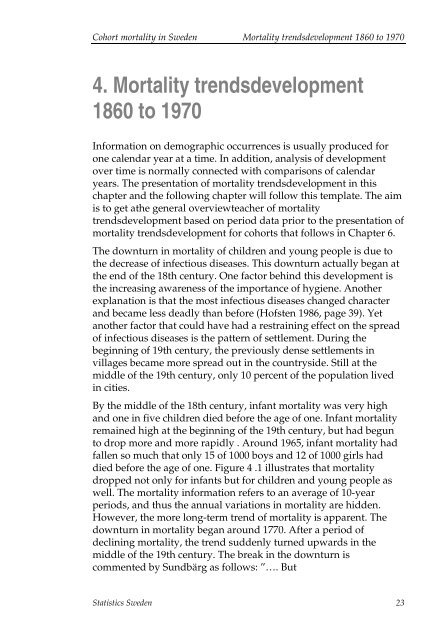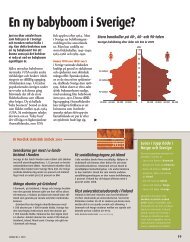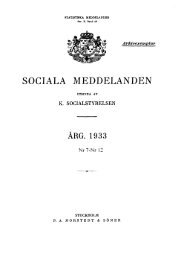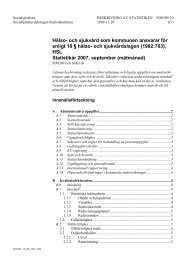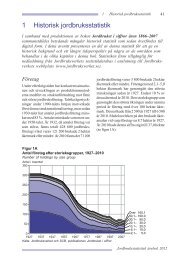Cohort mortality in Sweden (pdf)
Cohort mortality in Sweden (pdf)
Cohort mortality in Sweden (pdf)
You also want an ePaper? Increase the reach of your titles
YUMPU automatically turns print PDFs into web optimized ePapers that Google loves.
<strong>Cohort</strong> <strong>mortality</strong> <strong>in</strong> <strong>Sweden</strong> Mortality trendsdevelopment 1860 to 19704. Mortality trendsdevelopment1860 to 1970Information on demographic occurrences is usually produced forone calendar year at a time. In addition, analysis of developmentover time is normally connected with comparisons of calendaryears. The presentation of <strong>mortality</strong> trendsdevelopment <strong>in</strong> thischapter and the follow<strong>in</strong>g chapter will follow this template. The aimis to get athe general overviewteacher of <strong>mortality</strong>trendsdevelopment based on period data prior to the presentation of<strong>mortality</strong> trendsdevelopment for cohorts that follows <strong>in</strong> Chapter 6.The downturn <strong>in</strong> <strong>mortality</strong> of children and young people is due tothe decrease of <strong>in</strong>fectious diseases. This downturn actually began atthe end of the 18th century. One factor beh<strong>in</strong>d this development isthe <strong>in</strong>creas<strong>in</strong>g awareness of the importance of hygiene. Anotherexplanation is that the most <strong>in</strong>fectious diseases changed characterand became less deadly than before (Hofsten 1986, page 39). Yetanother factor that could have had a restra<strong>in</strong><strong>in</strong>g effect on the spreadof <strong>in</strong>fectious diseases is the pattern of settlement. Dur<strong>in</strong>g thebeg<strong>in</strong>n<strong>in</strong>g of 19th century, the previously dense settlements <strong>in</strong>villages became more spread out <strong>in</strong> the countryside. Still at themiddle of the 19th century, only 10 percent of the population lived<strong>in</strong> cities.By the middle of the 18th century, <strong>in</strong>fant <strong>mortality</strong> was very highand one <strong>in</strong> five children died before the age of one. Infant <strong>mortality</strong>rema<strong>in</strong>ed high at the beg<strong>in</strong>n<strong>in</strong>g of the 19th century, but had begunto drop more and more rapidly . Around 1965, <strong>in</strong>fant <strong>mortality</strong> hadfallen so much that only 15 of 1000 boys and 12 of 1000 girls haddied before the age of one. Figure 4 .1 illustrates that <strong>mortality</strong>dropped not only for <strong>in</strong>fants but for children and young people aswell. The <strong>mortality</strong> <strong>in</strong>formation refers to an average of 10-yearperiods, and thus the annual variations <strong>in</strong> <strong>mortality</strong> are hidden.However, the more long-term trend of <strong>mortality</strong> is apparent. Thedownturn <strong>in</strong> <strong>mortality</strong> began around 1770. After a period ofdecl<strong>in</strong><strong>in</strong>g <strong>mortality</strong>, the trend suddenly turned upwards <strong>in</strong> themiddle of the 19th century. The break <strong>in</strong> the downturn iscommented by Sundbärg as follows: ”…. ButStatistics <strong>Sweden</strong> 23


